June 21, 2025 | 03:48 GMT +7
June 21, 2025 | 03:48 GMT +7
Hotline: 0913.378.918
June 21, 2025 | 03:48 GMT +7
Hotline: 0913.378.918
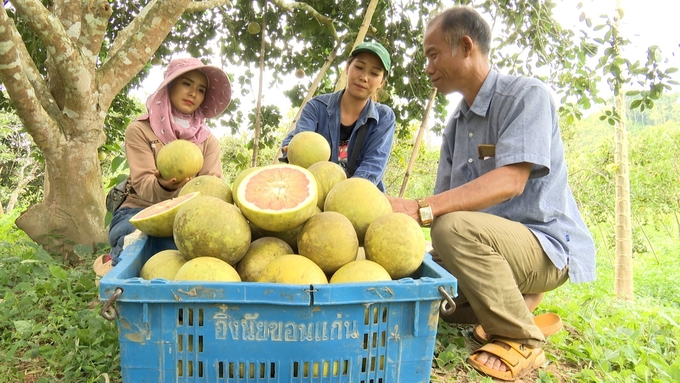
New opportunities can be found in Lao agriculture.
The headquarters of the Lao Ministry of Agriculture and Forestry is located on Lan Xang boulevard, the centralmost location of Vientiane. Welcoming the film crew of Vietnam Agriculture News (VAN), the Laotian comrades at the Ministry of Agriculture and Forestry (MAF) mainly spoke Vietnamese. It was understandable because most of them were international students with many years of studying and working in Vietnam.
"It must be fate that has brought you here at this time. The ministry has just organized an assessment of the situation in the first 9 months of the year, and we have a lot of good news," said Inpong Inthavong, an officer at the Department of Planning and Cooperation, who just returned from a long business trip in Vietnam.
This year, Laos, like all other countries in the world, continues to face various difficulties and challenges. However, the agriculture and forestry sectors still achieved encouraging achievements. Rice production reached 438,000 tons, exceeding 2.9% of the plan. Food output reached 2.3 million tons, including 392,016 tons of meat, eggs, and fish. The export target of USD 1.2 billion may soon be fulfilled.
Since the Lao government made a revolution to remove traffic bottlenecks for further development, the MAF has also outlined the direction and strategy of the industry. Promoting agro-product trade has become imperative, building connection infrastructure and becoming the region’s logistics center become a development strategy.
For localities, the MAF urgently allocates priorities and identifies commodity agricultural investment areas, concentrated along the Laos-China high-speed railway. Laos’ agriculture sector focuses on economic cooperation through organizing production forces to facilitate increased access to capital and easier market information, organize production and distribution of goods to ensure equal profits for production groups and society.
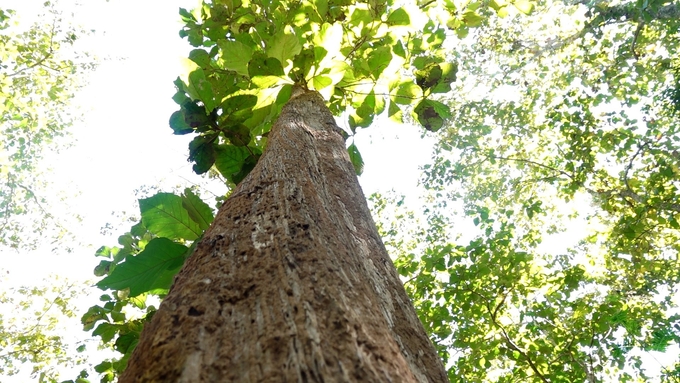
Taek wood – a “specialty” of the Lao forest.
After a day with the comrades at the MAF going to farming models and factories, witnessing the breakthroughs of Laos in terms of transport infrastructure, the whole film crew had a feeling that a new wave of opportunities is coming to the Land of a Million Elephants.
Less than a year ago, January 2022 to be exact, a special event happened. It was the first time that the two Prime Ministers of Laos and Vietnam had a meeting and dialogue with both sides’ businesses to discuss how to attract Vietnamese businesses to invest in the Land of a Million Elephants. In that meeting, in place of a call, Lao Prime Minister Phankham Viphavanh made a comparison: In the past, the “Western march” army did international duty in Laos, and it would be wonderful to see Vietnamese businesses “Western march” to Laos to invest.
And it seems that Prime Minister Phankham Viphavanh's thoughts are also what weighs the mind of those in the Ministry of Agriculture and Forestry of Laos. While working with the VAN film crew, Director of the Department of Planning and Cooperation Thasaka Saphangthong held the hand of Deputy Editor-in-Chief Tran Cao and said, “I hope that through information channels, Vietnam Agriculture News can convey our message to Vietnamese businesses.”
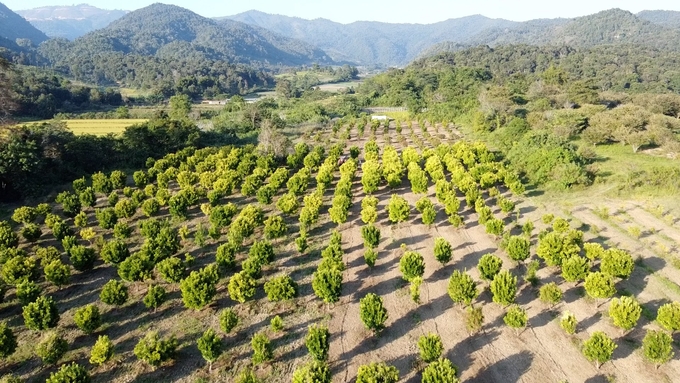
Vast land on Xiangkhouang Plateau.
For many years, with deep affection and pride in the heroic historical tradition, with special solidarity and unity “like no other” between Vietnam and Laos, many Vietnamese businesses saw the light of opportunities and chose to directly invest in Laos, especially in the agriculture sector. Some mentionable examples include Vietnam Rubber Group, Vietnam Dairy Products Joint Stock Company (Vinamilk), Truong Hai Group Joint Stock Company, Thanh Cong Group, and Greenfeed Vietnam Corporation.
This is the first year the Lao Ministry of Agriculture and Forestry sets a target of reaching USD 1.1 billion from agro-product exports, and the export value of animal products reaching USD 100 million. From planning, development strategy to goals, everything is very clear.
Coffee, concentrated in the provinces of Phongsaly, Xiangkhouang and Hua Phan, reaches an export volume of 175,500 tons this year, and the Lao agriculture sector strives to reach 500,000 tons by 2023. Maize grown in the northern provinces such as Xayaburi, Oudomxay, Xiangkhouang reaches 636,000 tons per year in terms of export output. By 2023, this commodity industry aims to reach 1.8 million tons to serve domestic animal feed processing factories and the rest are for export to China, Thailand, and Vietnam. Laos also exports 1.1 million tons of cassava so far this year with a total value of USD 146 million. By 2023, the country’s agriculture sector strive to achieve a total export output of 9.7 million tons.
Director Thasaka Saphangthong also frankly admitted that Laos has a vast fiscal space which is still left unexplored. “Laos is on its way to becoming the logistics center of ASEAN. With the long-standing friendship tradition of the two countries, we always think that cooperation with Vietnamese comrades will be the foundation to somewhat shorten the journey. We already have 8 pairs of international border gates, 7 pairs of main border gates and 18 pairs of secondary border gates. Economic exchanges as well as travel, import and export of goods between Vietnam and Laos are becoming more convenient than ever. Trade between the two countries has benefited greatly from the reduction of tax rates to 0% for most products under the ASEAN Trade in Goods Agreements and the Vietnam-Laos Bilateral Trade Agreement. Today's achievements may not be commensurate with the potential, advantages and opportunities, but they are the basis for us to move forward together, contributing to the great friendship between the two countries.”
On this trip to Vientiane, we happened to meet Nguyen Thi Thanh Thu, Chairwoman of the Board of Directors of AutoAgri Software Technology Joint Stock Company. For more than a decade Ms. Thuc has been a business partner of many Lao enterprises in the agricultural industry. Her company is currently supporting this country to develop smart agriculture. “After witnessing the breakthroughs and achievements of the Lao people in transportation, I think this is a great time for Vietnamese enterprises to grasp the opportunities,” said the AutoAgri Chairwoman.
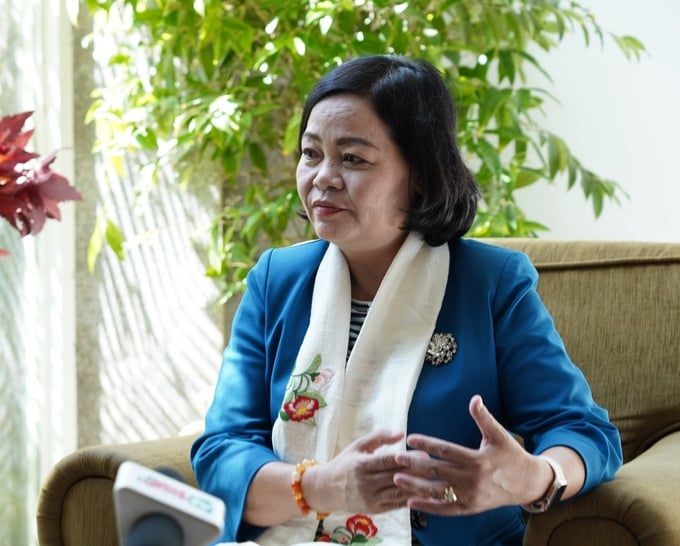
Nguyen Thi Thanh Thu, Chairwoman of the Board of Directors of AutoAgri Software Technology JSC.
Since Laos aims to become a logistics center connecting ASEAN countries to the China market, the opportunity is huge for Thailand, Cambodia, Myanmar and of course Vietnam. But what makes the difference is that Vietnam possesses a favorable geographical position and a rare tradition of friendship in the world.
On the other hand, although the Land of a Million Elephants is sparsely populated, the resources of agro-products are abundant while domestic consumption is low. The present situation makes it convenient for businesses to purchase, process and export Laos’ agro-products to other countries. Difficulties in transportation and irrigation partly make Laos' agriculture still retain many unique natural products such as mushrooms and medicinal herbs from the forest. Cattle farming still has immense space thanks to its large land resources and favorable climate.
As for science and technology, Vietnam has applied in the country and harvested many successes. If Vietnamese businesses brought those advances to Laos to invest, the agricultural scene here will definitely thrive.
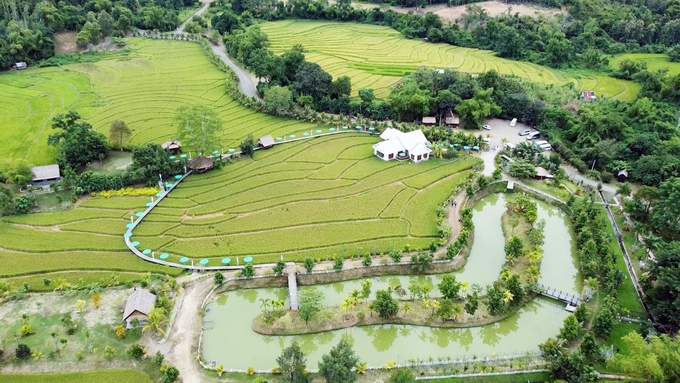
The Land of a Million Elephants is brimmed with “million opportunities”.
“More than the cost reduction thanks to improved transportation, Laos at the moment also open up great opportunities in terms of tourism development not only for Vietnam but also for Thailand, China and many other countries. Therefore, from this moment, I hope Vietnamese businesses should research and invest soon so as not to be left behind by other countries," said AutoAgri Chairwoman Nguyen Thi Thanh Thuc.
Translated by Samuel Pham
/2025/06/17/3942-2-143243_548.jpg)
(VAN) Recently, in Sweden, the Secretary of the Binh Dinh Provincial Party Committee presented the Investment Registration Certificate for the 'Polyester Fabric Recycling Complex' project to SYRE Impact-AB Company.
/2025/06/12/3721-2-202745_83.jpg)
(VAN) TH made an impression at Seoul Food 2025 with its line of natural beverages, paving the way for Vietnamese food products to enter the South Korean market.

(VAN) Soc Trang's success in rice exports stems from a strategy of developing fragrant and specialty rice cultivation areas and standardizing production toward low-emission practices.
/2025/06/11/1311-5-120811_839.jpg)
(VAN) The pig farming industry is facing the challenge of comprehensive restructuring to meet requirements for quality, safety, traceability, and market expansion both domestically and for export.

(VAN) Vietnam considers participating in ALGROALBA in order to expand agricultural production, coordinate the assessment and effective exploitation potential land.
/2025/06/05/5314-1-184727_407.jpg)
(VAN) From seemingly worthless fish scales and skin, enzymes and lactic ferments can transform by-products into peptides, opening a sustainable, effective business direction and elevating Vietnamese seafood.

(VAN) TTC AgriS and IFC signed a strategic partnership to develop a sustainable agricultural value chain, aiming to achieve the Net Zero target by 2035.